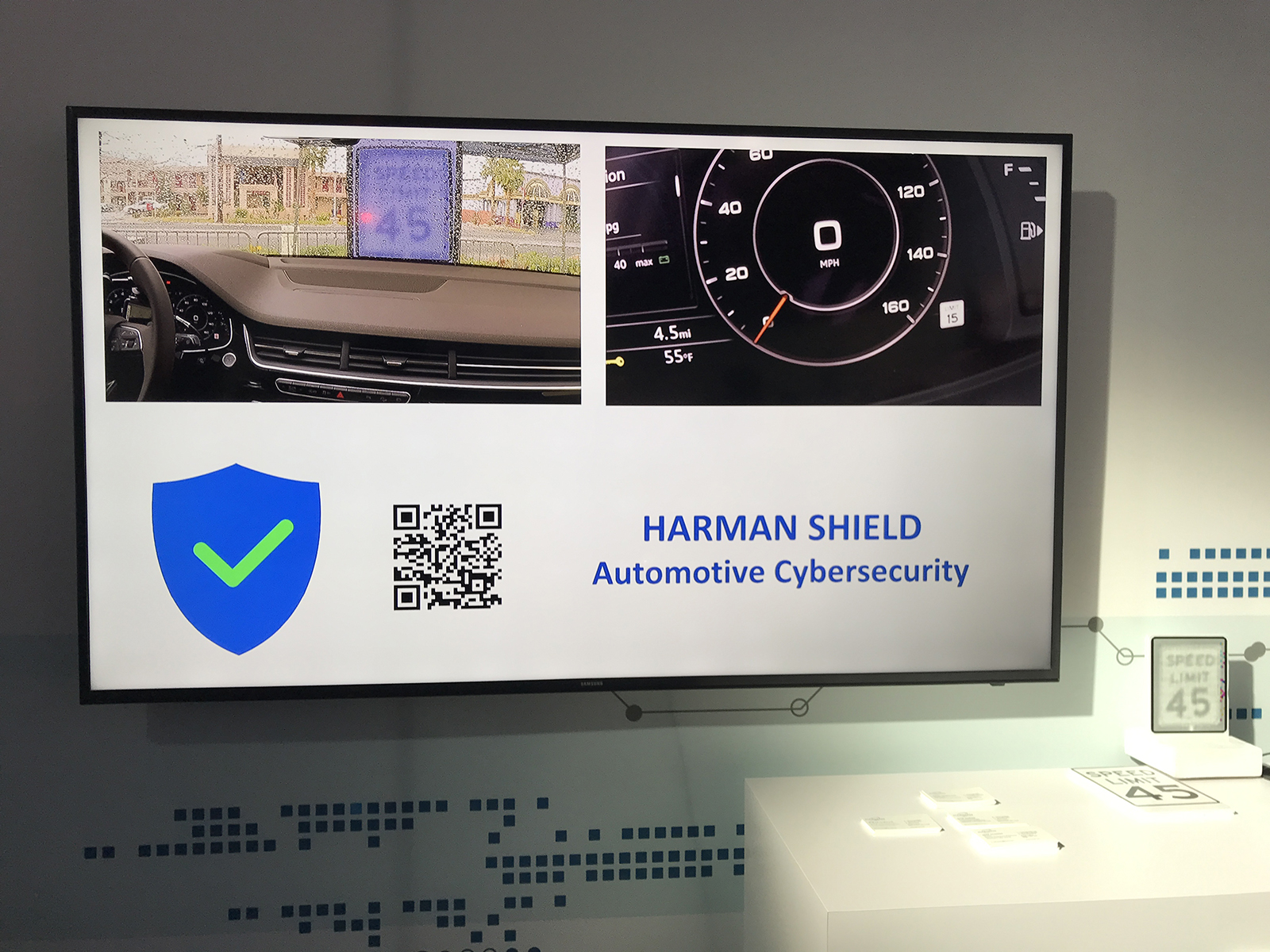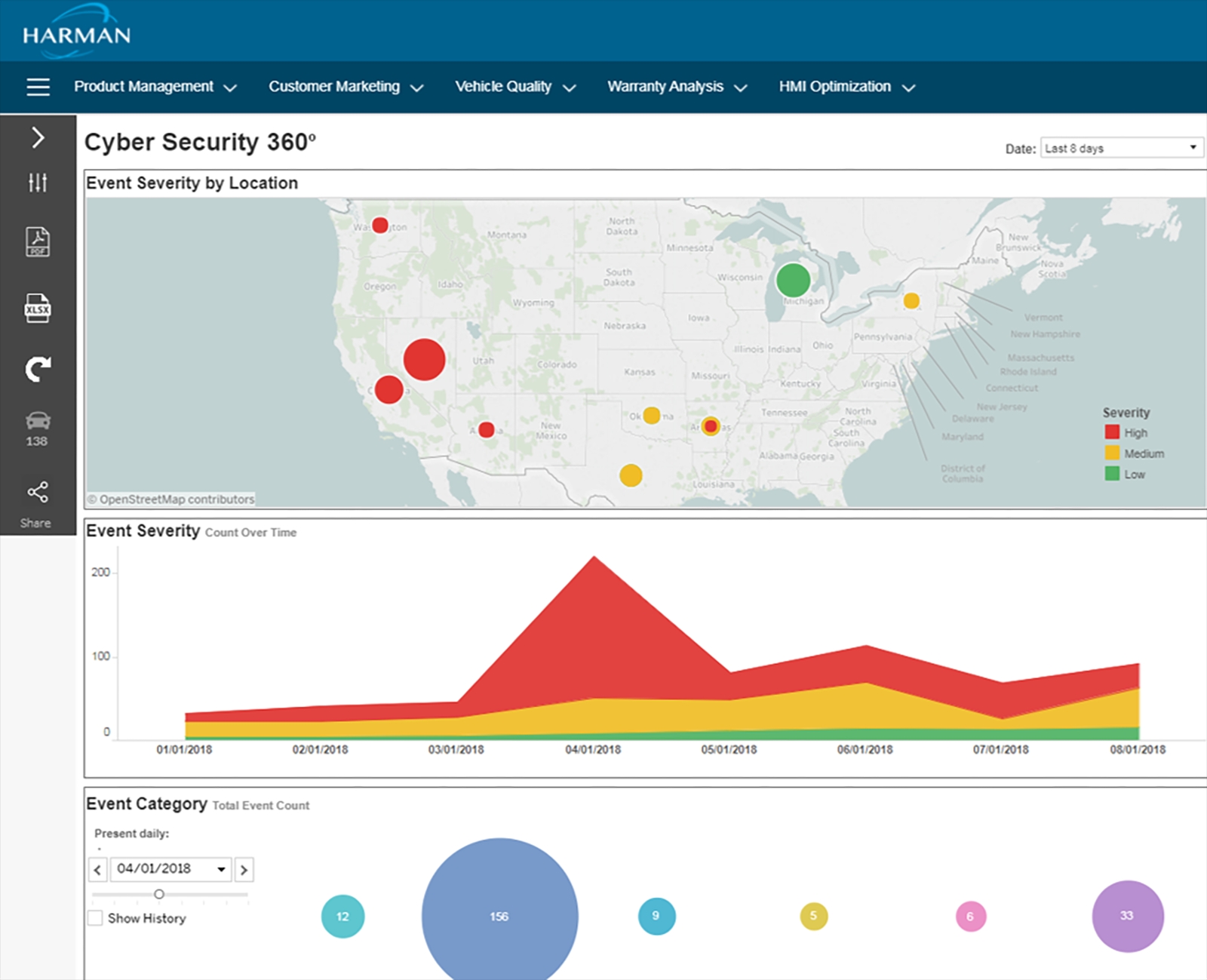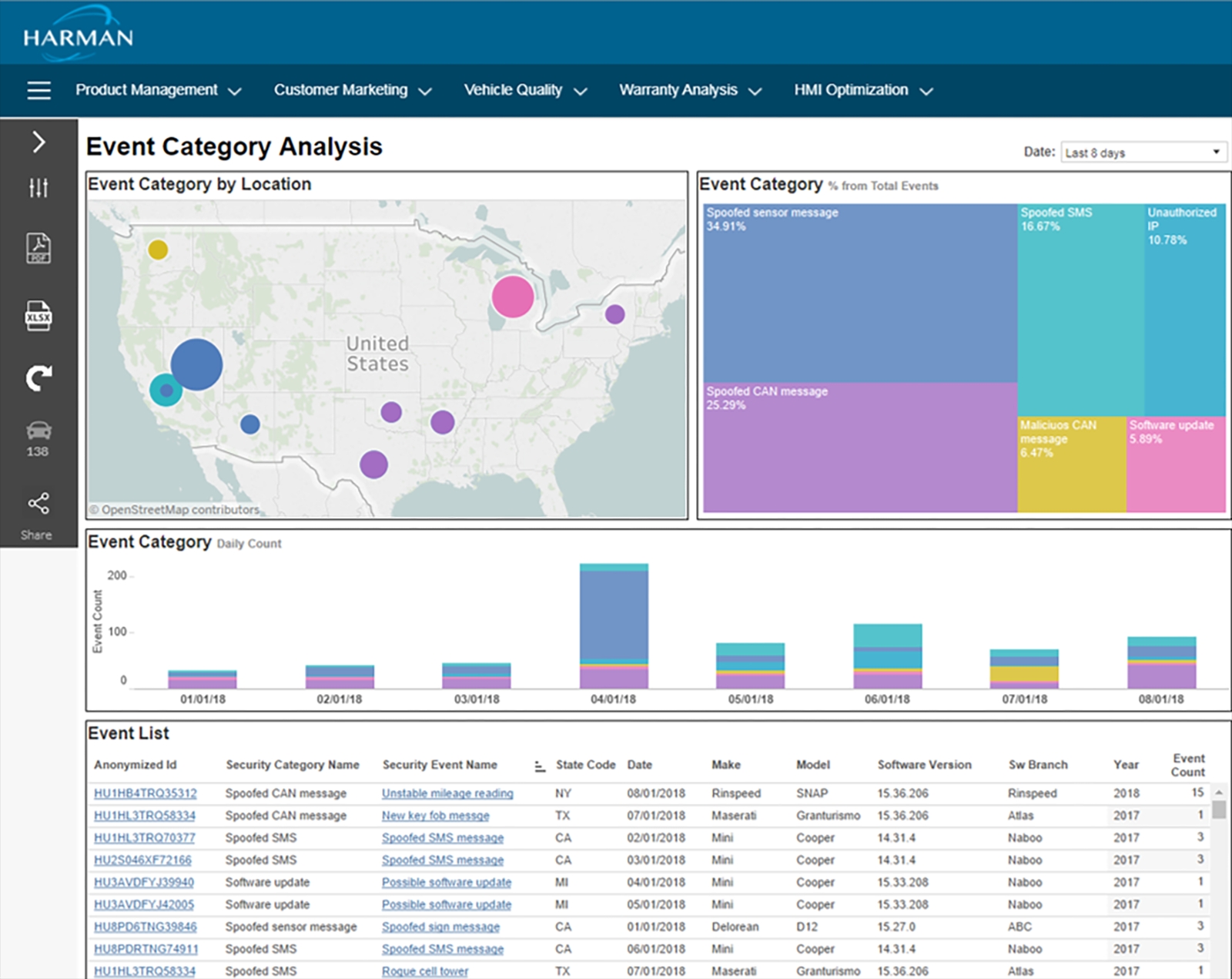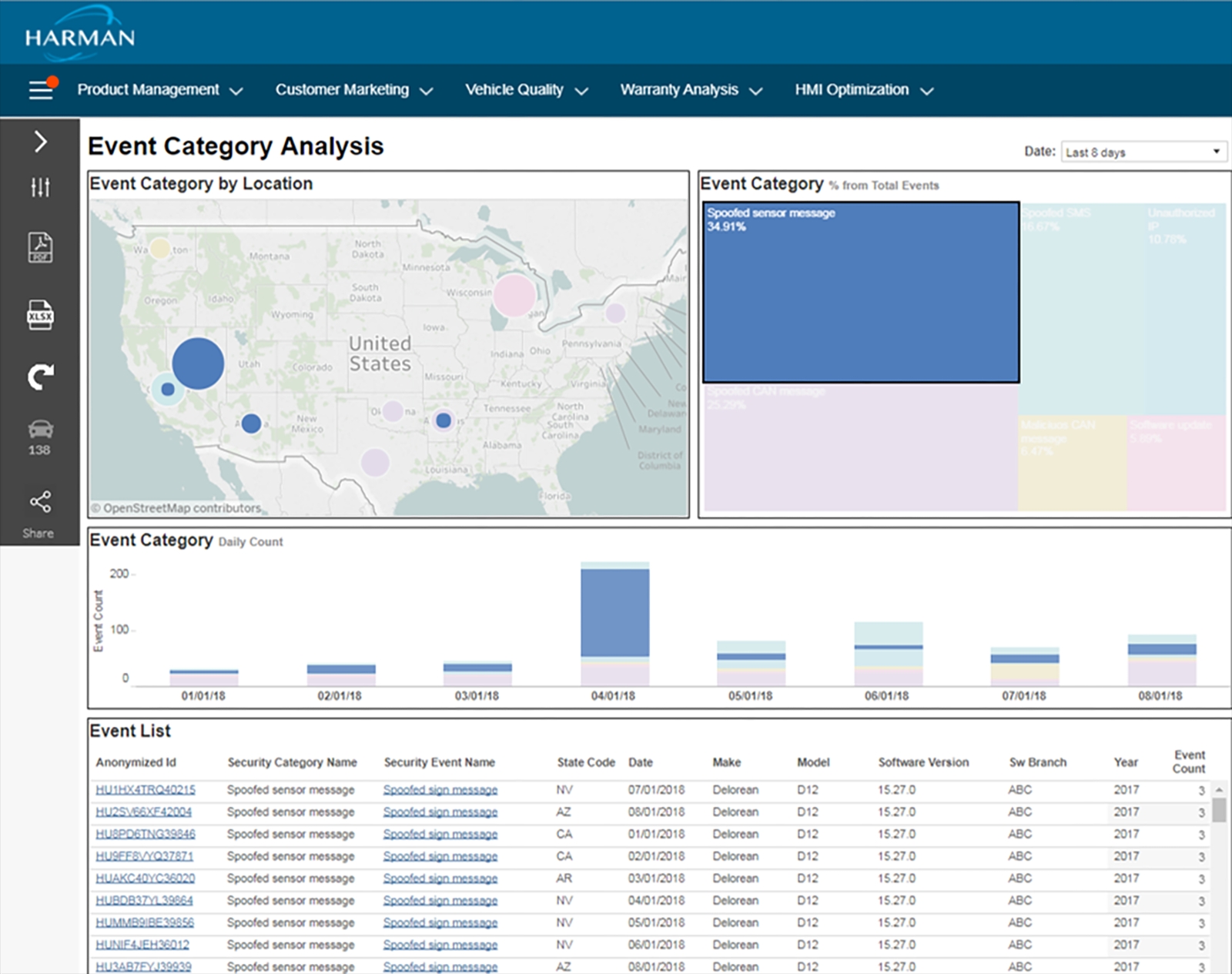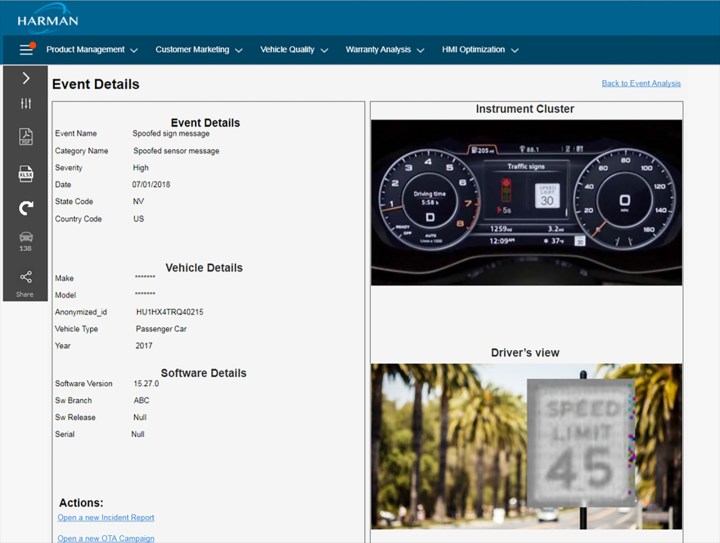
An American subsidiary of Samsung, Harman showed off some of the latest strides it’s making in terms of autonomous driving and connected car capabilities at CES. The company recently revealed its latest Harman Shield Solution, an application suite that protects autonomous and semiautonomous vehicles from cyberattacks and “sensor spoofing.”
Think of it as Norton Antivirus or AVG for your self-driving and semi-self-driving cars.
Click here for all of our coverage for the 2018 CES show in Las Vegas.
Autonomous driving tech took some heat after researchers at the University of Washington demonstrated that current autonomous vehicles are capable of being “hacked” and “tricked” into driving more dangerously. As an example, the same researchers found that autonomous vehicles can easily be tricked and confused simply by the presence of graffiti on roadside traffic signs, which current autonomous and semi-autonomous cars scan and use for reference.
Harman’s Shield Solution seeks to remedy these flaws and to prevent malicious attacks from happening, and you can see it in action at Harman’s stand at CES.
Harman’s demonstration shows how a Harman-equipped car’s on-board traffic sign recognition system responded to a vandalized traffic sign that gave the computer false information about speed limits. This in turn affects the accuracy and effectiveness of other related systems, such as adaptive cruise control, causing it to believe the posted speed is different from what it actually is.
The falsified sign was detected and reported to Harman’s 24/7 Cybersecurity Analysis Center. The images are then inspected and factored into the computer’s neural network, and used to improve Harman’s Shield Solution to mitigate such in stances.
“In 2017, dozens of cities around the world have deployed autonomous vehicle pilots, from San Francisco to Las Vegas and London, all while the attack surface of autonomous vehicles continues to grow and change,” said Yuval Weisglass, vice president of automotive cyber security at Harman Connected Services.
“In order to protect autonomous vehicles against these types of cyberattacks, now is the time to adopt a security-by-design approach, developing unconventional detection and protection capabilities. As part of our ongoing investment in R&D, we constantly revalidate our threat assessments in order to identify new fields that might impact the attack surface of connected and autonomous vehicles.”
Editors' Recommendations
- Cruise autonomous vehicle drives over woman just after she was hit by another car
- An autonomous car in San Francisco got stuck in wet concrete
- Autonomous cars confused by San Francisco’s fog
- A weird thing just happened with a fleet of autonomous cars
- How a big blue van from 1986 paved the way for self-driving cars
